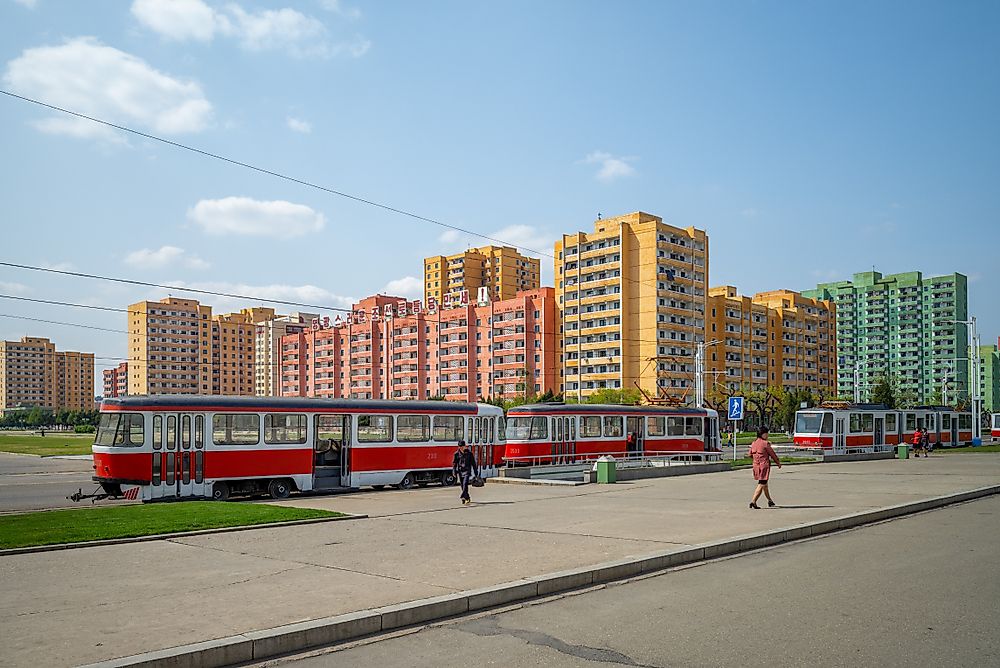The Population Of North Korea

The Population Of North Korea
North Korea tends to be a mysterious country and does not share information with the outside world. Not much is known about its interior except for that which comes from non-North Korean agencies. Its population, for example, has been estimated at 24.45 million by the UN Population Division. The number is expected to grow to 24.55 million by 2100. There are 14.51 births per 1,000 individuals here and 9.18 deaths per 1,000. The life expectancy of North Koreans is 69.81 years.
Of the current population, approximately 32% are under- or malnourished. Despite its concerning level of increasing hunger, the country has a large military force which involves millions of the population. Approximately 5.7 million people serve as reservists in the Peasant Red Guard. Another 1.19 million are on active duty in the Army, Navy, and Air Force. These military branches have an additional 600,000 reservists and 189,000 active paramilitary troops. This equates to approximately one-third of the population.
Language Of North Korea
Because of its closed relationship with the rest of the world, Korea has a highly homogenous culture. The vast majority of the population speaks Korean. South Koreans also speak this language, although, there are some differences. In North Korea, the Pyongyang dialect is spoken. This dialect does not utilize any English or Japanese loanwords as does the dialect of South Korea. In fact, the North Korean language has eliminated any words or character of Western, Chinese, or Japanese origin.
Religion In North Korea
The Constitution ensures the right to freedom of religion. However, the government of North Korea actively discourages its practice. Although the country is considered an atheist state, only 64.3% of the population identify as irreligious. Approximately 16% of the people here follow Korean shamanism and another 13.5% follow Chondoism. Buddhists make up 4.5% of the population and Christians 1.7%. These percentages may not be exact, however, as many people are reluctant to identify with a religion given the high incidence of religious persecution in the country.
Ethnic Groups In North Korea
As previously mentioned, the society in North Korea is homogenous. This means that racial and ethnic diversity does not exist. With the exception of a very small Chinese and Japanese community, as well as a few ethnic Thai, Indian, Singaporean, Vietnamese, Africans, and Americans, the people living in this country are all of North Korean descent.
Immigration And Emigration: Laws And Restrictions
North Korea is a member of the International Covenant on Civil and Political Rights, which allows for the free movement of people to leave any country, including their own. In practice, this country does not uphold the agreement. The North Korean government restricts the migration of people entering and leaving the country. The majority of its emigrants, those leaving the country, are economic and humanitarian refugees; if their departure is unauthorized, it is considered an act of treason. If a person is caught illegally emigrating, they are arrested and placed in penal labor camps for sentences of between 2 and 7 years. Reports from these camps indicate high levels of death and torture. The government does send some independent contractors to work abroad temporarily. People coming into the country are mainly on temporary visas. The majority of these individuals come from South Korea on business, as investors, or on vacation. The number of people leaving North Korea exceeds the number of people coming into the country.
Population Of North Korea
| Rank | Fact | Figure |
|---|---|---|
| 1 | Population | 24,052,231 |
| 2 | Density | 199.54 inhabitants / sq. km. |
| 3 | Birth rate | 14.51 births/1,000 population |
| 4 | Death rate | 9.18 deaths/1,000 population |
| 5 | Life expectancy | 69.81 years (2014 est.) |
| 6 | Infant mortality rate | 24.5 deaths/1,000 live births (2014 est.) |
| 7 | Net migration rate | -0.04 migrant(s)/1,000 population (2014 est.) |
| 8 | Ethnicity | Racially homogeneous: Koreans; small Chinese community, a few ethnic Thai, Japanese, Singaporeans, Indians, Africans,Vietnamese, and Americans |
| 9 | Religion | Predomonantly Cheondoism |











